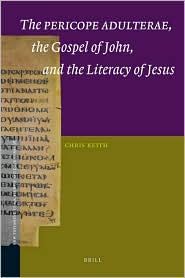The SBL International Meeting Program book is now publicly available
here where you will also find abstracts to the papers. Below are some sessions related to textual criticism:
1-5 Dead Sea Scrolls and Hebrew Bible 7/01/2009
8:30 AM to 12:00 PM
Room: C214 - GU
Theme: The Dead Sea Scrolls and the Textual History of the Hebrew Bible
Armin Lange, University of Vienna, Presiding
Sidnie White Crawford, University of Nebraska
The Contribution of the “Non-Aligned Texts” to Understanding the Textual History of the Bible (20 min)
Discussion (10 min)
Kristin De Troyer, St. Andrews University
Looking at Bathsheba with Text Critical Eyes (20 min)
Discussion (10 min)
Julio Trebolle, Universidad Complutense de Madrid
The History of the Biblical Text: Implications for Other Fields of Study (20 min)
Discussion (10 min)
Break (30 min)
Chelica Hiltunen, University of Oxford
An Examination of the Supposed pre-Samaritan Texts from Qumran (20 min)
Discussion (10 min)
Panel Discussion
Russell Fuller, University of San Diego, Panelist (15 min)
Arie van der Kooij, Leiden University-The Netherlands, Panelist (15 min)
Eugene Ulrich, University of Notre Dame, Panelist (15 min)
Discussion (15 min)
2-20 Working with Biblical Manuscripts (Textual Criticism)7/02/2009
8:30 AM to 12:00 PM
Room: C211 - GU
Martin Heide, University of Marburg
The Semitic Background of Some Variants in the Greek New Testament (30 min)
Keith Small, London School of Theology
A Quranic Window onto New Testament Textual History (30 min)
Dave Nielsen, Brigham Young University
The Reception of Sense-Units in Versions of the Greek New Testament (30 min)
Break (30 min)
Bill Warren, New Orleans Baptist Theological Seminary
When is a Textual Variant an Error?: Case Studies for Determining Scribal Errors (30 min)
2-43 Text Criticism Workshop on Samuel and Kings7/02/2009
1:30 PM to 4:15 PM
Room: T302 - GU
Julio Trebolle, Universidad Complutense de Madrid, Presiding
Pablo Torijano , Universidad Complutense de Madrid
More Kaige Characteristics in I-IV Regnorum (30 min)
Discussion (15 min)
Andres Piquer-Otero, Universidad Complutense de Madrid
“Chariots of Israel”?: Textual Criticism and the Narrative Traditions of Elijah and Elisha (30 min)
Discussion (15 min)
Break (30 min)
Julio Trebolle, Universidad Complutense de Madrid
Textual and Literary Criticism of 2 Kings 17:2-6 (30 min)
Discussion (15 min)
3-11 First Esdras7/03/2009
8:30 AM to 11:30 AM
Room: C021 - GU
Gary Knoppers, Pennsylvania State University University Park, Presiding
Adrian Schenker, University of Fribourg
The Priority of 1 Esdras in Comparison with MT Ezra-Nehemiah (30 min)
Paul Harvey, Pennsylvania State University
First Esdras: Style and Semantics in Hellenistic Greek Context (30 min)
Bob Becking, Utrecht University
The Story of the Three Youth and the Composition of First Esdras (30 min)
Break (30 min)
Zipora Talshir, Ben-Gurion University of the Negev
Ancient Composition Patterns Mirrored in First Esdras (30 min)
Deirdre Fulton, Pennsylvania State University
Lower Criticism and Higher Criticism: The Case of 1 Esdras (30 min)
3-15 Historical Books (Hebrew Bible)7/03/2009
8:30 AM to 11:00 AM
Room: Sala Pro E - GU
Hava Guy, The David Yellin College
Three Royal Deaths in Early Prophets: Type-scene or Intertextuality? (30 min)
Kevin Hall, Oklahoma Baptist University
Poetic Justice: Can a Preposition Make Hannah a Priest? (30 min)
Marie-France Dion, Concordia University Montreal
The Deuteronomistic’s Characterization of “The People” (30 min)
Break (30 min)
David Elgavish, Bar Ilan University
War Descriptions in the Book of Kings: A portrayal of Moderation (30 min)
3-46 Working with Biblical Manuscripts (Textual Criticism)7/03/2009
1:30 PM to 5:00 PM
Room: C215 - GU
Eun Woo Lee, Presbyterian College and Theological Seminary
Pozin's Synchronic Reading and the Textual History of Joshua 3-4 (30 min)
John P. Flanagan, Leiden University
Translation Techniques in the Latin Versions of Isaiah (30 min)
Peter M. Head, Tyndale House
The Identification of Letter-carriers in Subscriptions to the Pauline Letters: Manuscripts, Sources and the Development of a Tradition. (30 min)
Break (30 min)
Matteo Grosso, University of Torino
“Where There is no Male and Female”: On the Textual Tradition of Colossians 3:11 (30 min)
Rick D. Bennett, Jr., Reformed Theological Seminary
The Search for Nomina Sacra: An Analysis of the Distribution and Form of Nomina Sacra in Early NT Papyri with New Technology (30 min)
4-13 Working with Biblical Manuscripts (Textual Criticism)7/04/2009
8:30 AM to 12:00 PM
Room: C109 - GU
J. L. H. Krans, Utrecht University
Working with Codex Boreelianus (F 09) (30 min)
James M. Leonard, University of Cambridge
Singular Readings in a Primary Versional Witness to the D-text: A Sampling from
Codex Glazier (30 min)
Tommy Wasserman, Lund University
"Misquoting Manuscripts": The Orthodox Corruption of Scripture Revisited (30 min)
Break (30 min)
Timothy B. Sailors, University of Tubingen
A New 'Gospel of the Apostles': Observations on the Initial Proposals and Suggestions for Further Research (30 min)






+Scribal+note.jpg)






